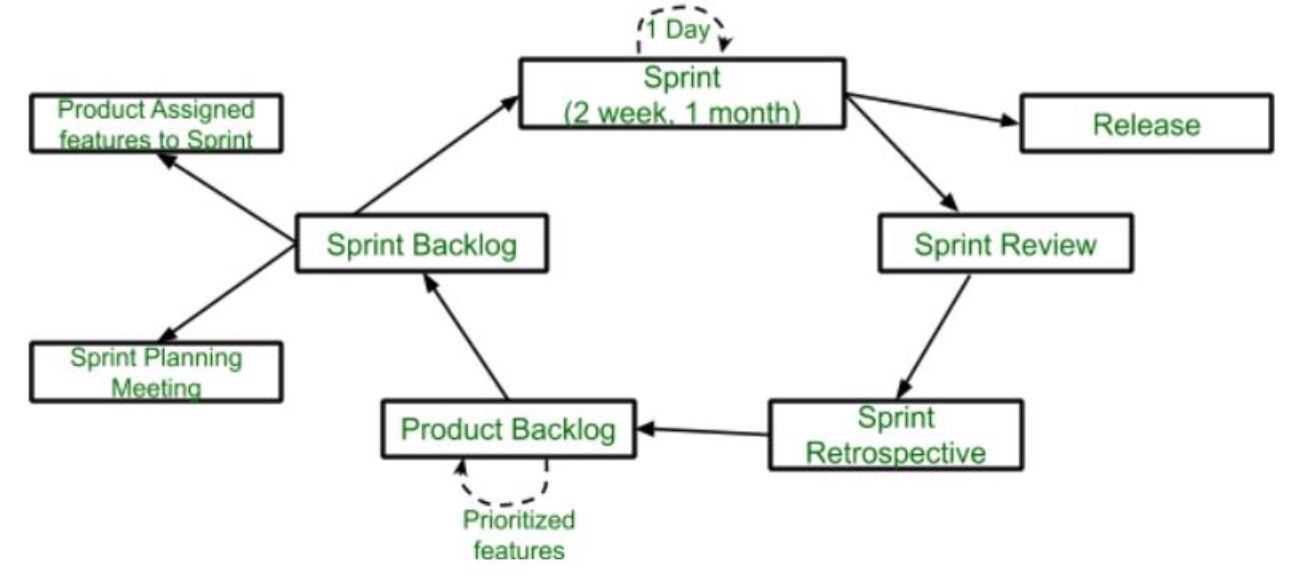
Things to know about Scrum framework
The constant development and evolution of technology are changing the way we work and live. Also, the adoption of technological innovations like AI-enabled programs, 5G, mobile and web applications, IoT platforms, blockchain-based systems, Agile and Scrum, has simplified the process of solving business problems and challenges.
Enterprise Agile practices are being fast adopted across organizations, and with it, the demand for Certified ScrumMaster training is on the rise. Scrum is a part of the Agile framework and provides a set of principles, practices, and techniques to implement business agility not only in IT but also within groups outside IT and software development departments. This article will walk you through some of the latest trends in software development and will discuss the concepts of Agile and Scrum.
Latest trends in software development
In this section, we will give a brief overview of some of the latest software development trends that have spread across industries and businesses:
- Artificial Intelligence – AI-first software or designing software using artificial intelligence has become a hot trend. AI has various applications in technology, healthcare, and agriculture. Giving business benefits like reduced costs, streamlined operations, boosted productivity, improved performance, and enhanced customer relations, the global market of AI is expected to reach $190.61 billion by 2025.
- 5G – A revolutionary wireless communication technology, 5G ensures improved data security, better speed, connections, and enhanced mobile broadband experience to smartphone users. It is anticipated that the worldwide expenditure on 5G infrastructure will reach about $2.3 billion by 2021.
- Blockchain technology – The annual revenue of the blockchain market is expected to reach $20 billion by the end of 2024. Blockchain technology has allowed the transfer of data and money safely and transparently. And, it has attracted investments in several sectors, including healthcare, manufacturing, and finance, as well as the public sector.
- Internet of Things (IoT) – The IoT market revenue has been predicted to reach $1.6 trillion by 2025. Offering several benefits, such as connecting sensors, devices and machines, collecting massive amounts of data, reducing operation costs, and accelerating processes, IoT is expected to grow most rapidly in healthcare, telecommunications, and construction sectors.
- Agile and Scrum – Enterprise Agile practices are becoming an inevitable part of portfolio management, product management, and human resources, besides IT and software development. Scrum is a kind of Agile framework that breaks large products and services into smaller fragments to ensure the highest levels of product delivery. Certified ScrumMaster training is in demand as the trend of implementing the Scrum framework is fast increasing in product management and delivery.
What is Agile and Scrum?
Based on the idea of iterative development, Agile software development is a set of software development processes where self-regulatory cross-functional teams collaborate to evolve requirements and solutions. Agile practices aim to promote a project management process that is disciplined and calls for leadership, teamwork, constant inspection and adaptation, accountability, and self-organization. The ultimate goal of Agile is to ensure accelerated delivery of software of the highest quality and aligning business development with company objectives and customer needs. Any development process that is based on the concepts of the Agile Manifesto is referred to as Agile development. The manifesto contains the dos and don'ts of software development and reflects the experiences of 14 eminent figures of the software industry. Two of the most widely used Agile methodologies are Scrum and Kanban.
Scrum is a type of Agile methodology. The Scrum framework allows organizations to deliver a product that satisfies evolving business objectives while smoothly attuning to changing business environments. The organization benefits as the quality of the products are increased, there is rapid coping with change, improvement is continuous, product delivery is accelerated, and feedback is fast. Involving incremental and iterative practices, Scrum is employed to accomplish complicated software management and product development.
The salient features of Scrum are:
- It is a light-weight framework with a minimum overhead of the process and maximum productivity.
- There is an emphasis on self-organization.
- The Scrum framework encourages collaboration among teams.
- It is quite simple to understand.
As evident, the benefits that Scrum brings to an organization have created a massive demand for Scrum practitioners who understand its values and the methodologies of product management. Certified ScrumMaster training is essential for professionals wishing to step into the shoes of a Scrum practitioner.
Things to know about the Scrum framework

https://www.geeksforgeeks.org/scrum-software-development/
The Scrum framework is designed to help teams adapt to evolving conditions and customer requirements with short release cycles so that there is scope for constant improvement. Below, we describe the different components of the Scrum framework:
Sprint – It is the period when the Scrum team works in collaboration to finish an increment.
Increment – It is the usable end-product or goal of the sprint.
Release – The completed product goes to the release stage.
Sprint review – It is an informal session when the team inspects the increment, which is subsequently released if there are no additional achievable features.
Sprint retrospective – In this stage, the team focuses on failures and improvements of the sprint. The quality of the product is also checked at this stage.
Product backlog – It is the ‘To do’ list of the product owner that sets out the requirements, features, fixes, and enhancements that dictate the product organization.
Sprint backlog – It lists out the items, bug fixes or user stories that are to be implemented in the current sprint cycle. It has two parts – sprint planning meeting and product assigned features to sprint.
The advantages of using the Scrum framework are:
- It is cost-effective and fast-moving.
- Customer satisfaction is prioritized.
- The structure is adaptive due to short sprint cycles.
- Owing to constant feedback, the product quality is improved in a short time.
However, Scrum has certain disadvantages. For instance, the fundamental sprint goal cannot be changed. The framework is not a fully described model that makes planning, structuring, and project organization difficult. And, the requirement of frequent reviews and regular scrum meetings demand substantial resources.
Software development trends are fast-evolving, with more and more businesses collaborating with novel technological innovations. The Scrum framework is one such tool that has enhanced productivity and performance through Agile principles and practices. Certified ScrumMaster training can add to your relevance and marketability across any industry or organization that adopts Agile values and practices.



















